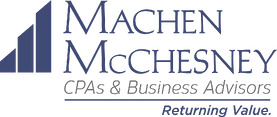 A well-managed restaurant doesn’t always guarantee a sound business strategy, but approaching restaurant management with a focus on facts, figures and the future can help in achieving long-term success. When it comes to running your business, financial modeling and long-term planning often get lost in the shuffle of day-to-day troubleshooting and management responsibilities. But for those looking to improve their financial practices and better communicate the restaurant’s potential success and value to lenders and investors, understanding the numbers and using them to effectively plan for long-term sustainability should be a top priority.
A well-managed restaurant doesn’t always guarantee a sound business strategy, but approaching restaurant management with a focus on facts, figures and the future can help in achieving long-term success. When it comes to running your business, financial modeling and long-term planning often get lost in the shuffle of day-to-day troubleshooting and management responsibilities. But for those looking to improve their financial practices and better communicate the restaurant’s potential success and value to lenders and investors, understanding the numbers and using them to effectively plan for long-term sustainability should be a top priority.For background, financial models are used to quantify a restaurant’s business plan to a given audience, such as new and existing lenders or investors. Its goal is to substantiate the potential value of a restaurant concept, along with the risk threshold for each audience, and can ultimately help determine whether a business is scalable. It’s important to note that developing the right financial model is not a one-size-fits-all approach, and although restaurants may have similar store-level operations, long–term goals can vary greatly.
While financial modeling can sometimes take on a life of its own, sticking to basic concepts and utilizing available software can simplify the process of developing a useful forecast.
Keep in mind these three tips when developing your financial models:
- Determine the key value drivers of your business
Key value drivers are the concrete components that have the largest impact on a business’s value, and may vary based on where a business is in its lifecycle. Examples include the specific sales and operating efficiencies of existing restaurants, new restaurant openings and G&A leverage. Once you have established the core drivers of your business, devote 80 percent of your focus on them. Directing your focus on the operating efficiencies that have proven successful in existing stores can also be helpful in making decisions about processes in newer restaurants, and can serve as proof points in communicating the potential value of growth initiatives. - Utilize the KISS method – keep it simple
Instead of looking in detail at hundreds of line items, categorize them into high-level buckets that encompass multiple costs within a single category, such as cost of goods sold, labor costs and total occupancy. For instance, sales should be included in a single line item, as opposed to being broken down by food sales, beverage sales and retail sales. Using umbrella categories to think about costs helps prevent against being bogged down by the minutia, and allows you to identify and home in on key areas that require attention. Broadly bucketing sets of values can also help planners understand and forecast, at a high level, the potential outcomes that can result under various circumstances. - Familiarize yourself with the software
Take the time to learn about and use your software’s linking and formula features – it will make the entire process easier. Understanding the software’s capabilities from the outset allows for more flexibility in financial models. For instance, automating and linking formulas from the general ledger system to an Excel data model simplifies the process of analyzing data changes and their potential implications as compared to manually updating key data on a routine basis. Spending time upfront to understand the technology will save time and guard against potential for error in the long run.
When it all boils down, your financial model should answer the question, “Will I make money?” Regardless of the outcome, having the knowledge to answer the question is half the battle.
Not sure where to start or looking for other restaurant accounting services expertise? Contact Mike Machen, CPA by calling (334) 887-7022 or by leaving us a message below.







